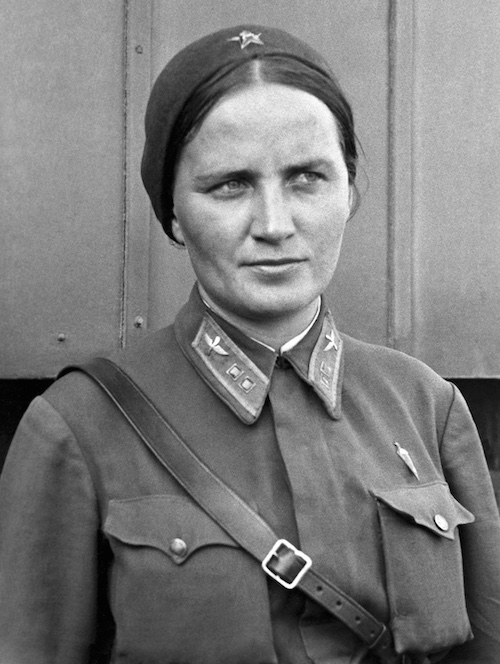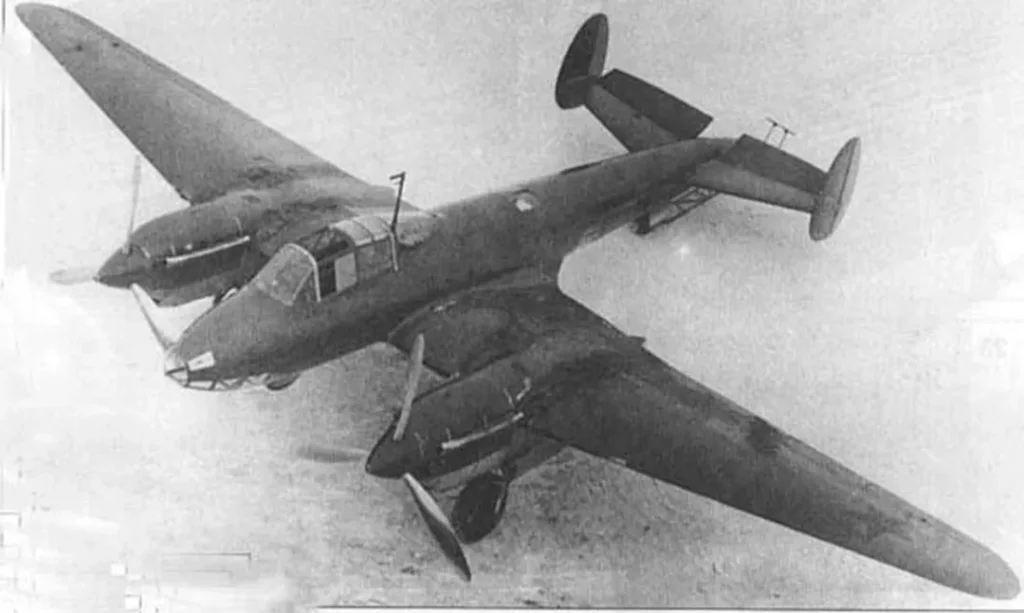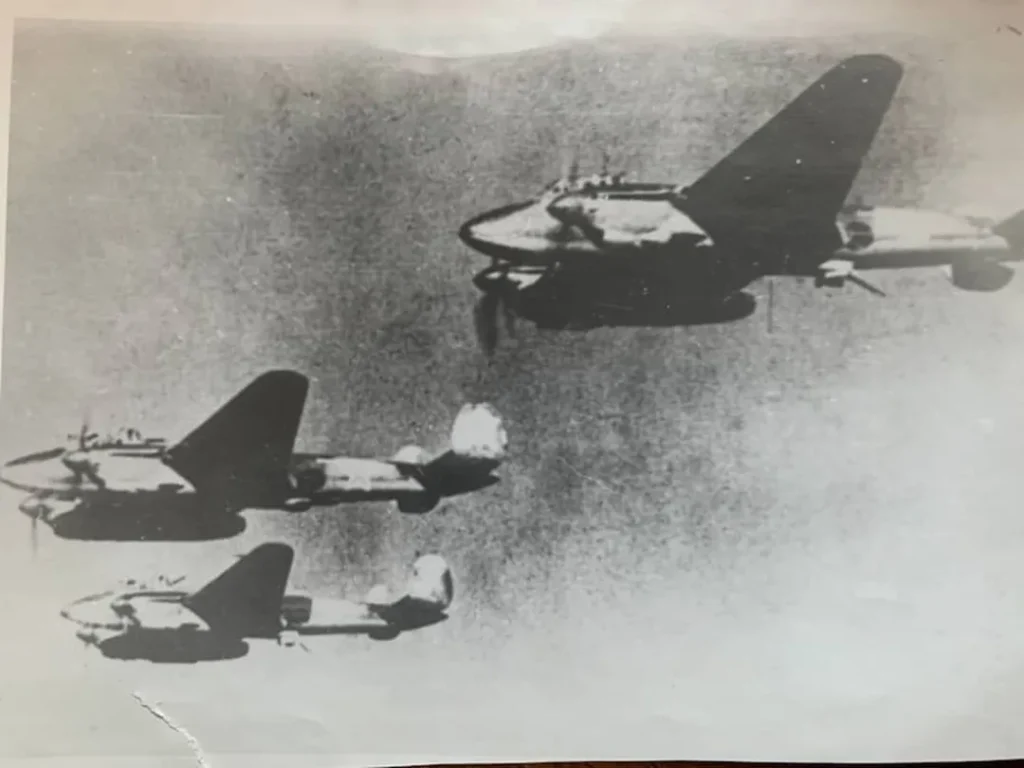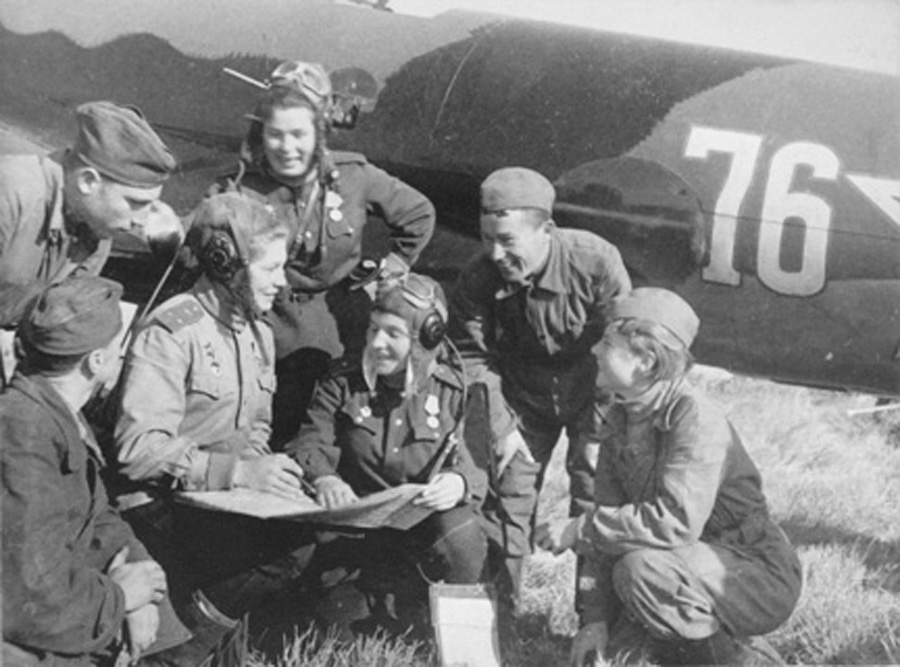Thanks to Kate Quinn’s best-selling novel The Huntress, many people know about the Night Witches – the all-female 588th Night Bomber Aviation Regiment. Some also know about the all-female 586th Fighter Aviation Regiment that flew combat missions inside the Soviet Union to protect important industries and sites from German bombers. But a third all-female aviation group – the 587th Dive Bomber Regiment – has received little recognition beyond Russia. Yet the pilots and ground crew of the 587th played an important role in defending their country during what the Russians call the Great Patriotic War.

Training
The 587th entered the war months after their sister regiments because they had trained on old and slow Sukhoi Su-2 bombers. These planes had a two-woman crew. Marina Mikhaylovna Raskova, who trained all three regiments, must have taken a special liking to the 587th because she chose to become its leader. Using her connections with high-level command, she was able to replace their decrepit Su-2 bombers with the most recently developed Pe-2 dive bombers. The new planes arrived in July, 1942. Because of the update, the pilots had to start their training anew, which stretched out through December of that year.
The pilots encountered a few problems with the new Pe-2 bombers. The cockpits were larger, which prevented some of the women from being close enough to the controls to work them. To solve the problem, the pilots propped two or three pillows behind them, which pushed them forward. Another problem was that the new bombers had a crew of three while the old Su-2 planes had a crew of two. Because not enough women in the group were qualified to fly, men were recruited, turning the 587th into a mixed-sex regiment.


Entering the War
The women loved Marina Raskova. Unfortunately, when the planes took off for their first assignment in Stalingrad in December, 1942, two squadrons encountered intense snow storms. The pilots decided to land to wait out the storm. But Raskova’s plane crashed, killing herself and the two others inside. Joseph Stalin paid special tribute to her by burying her at the Kremlin.
Major Valentin Markov replaced Raskova. The women were irate that their new leader was a male, and secretly nicknamed him “bayonet.” Markov, an experienced bomber combat pilot, wasn’t sure about his assignment either. Combat operations changed both points of view. Markov recognized the women’s competence and adjusted his leadership style to better guide them. He also led them to their bombing objectives by taking routes that avoided the Germans spotting them, which decreased casualties. The women, in turn, recognized his experience, competence, and flexibility by acting as professionals – and changed his secret nickname from “bayonet” to batya (“dad”).
The 587th began flying combat missions in January, 1943. They flew 1,134 missions – not just inside the Soviet Union at Stalingrad, the Don Front, and Belarus, but also in Lithuania and Poland – and dropped a total of 980 tons of bombs on German positions, batteries, ammunition dumps, and transportation lines. The 587th earned such a great reputation that they were awarded the coveted “Guards” designation, and afterwards became known as the 125th Guards Bomber Aviation Regiment. By war’s end, twenty-two pilots and crew members had died defending their country.

Markov and Dzhunkovskaya
Meanwhile, Major Markov had fallen in love with one of the navigators, Galina Dzhunkovskaya. His feelings for her became public knowledge within the 587th on the day Dzhunkovskaya’s crippled plane crash landed off base after a mission and Markov personally carried the injured Dzhunkovskaya from the rescue plane to the vehicle that would take her off the airfield. After the war, he confessed his love and they married.
Disbandment
Shortly after the war ended, the 587th was disbanded and many of the women returned to civilian life. Yet they never forgot their achievements in helping to save their country from German attack in the Great Patriotic War.
This post is Part 3 in a series about Soviet women pilots in WWII. Upcoming posts will highlight the achievements of individual pilots. For Part 2 on the 586th Fighter Aviation Regiment, click here.




